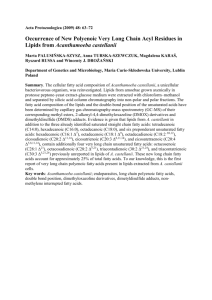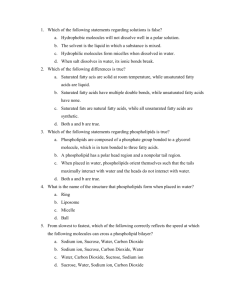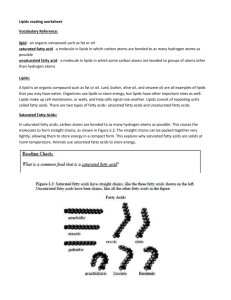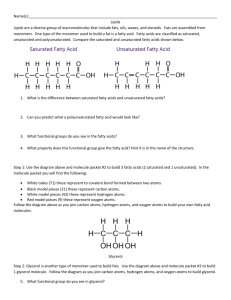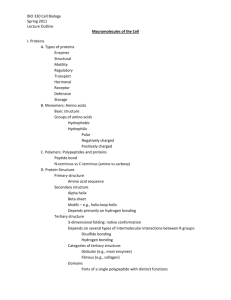LIPIDS REVIEW STUDY GUIDE Name: Period:______ Date: What
advertisement
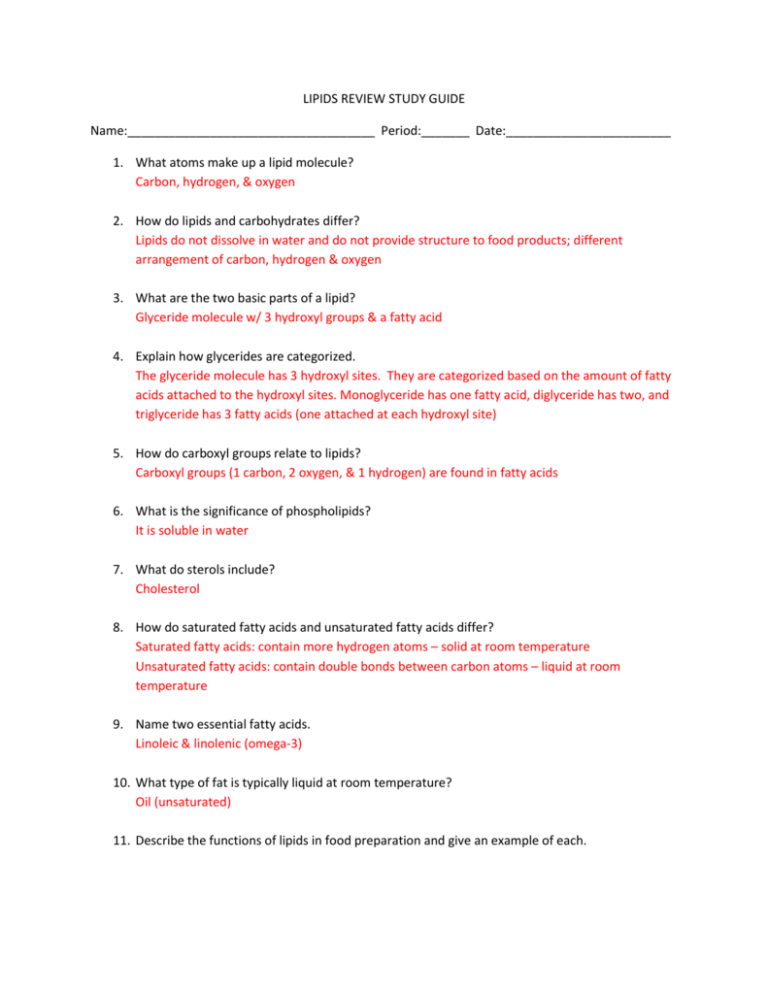
LIPIDS REVIEW STUDY GUIDE Name:____________________________________ Period:_______ Date:________________________ 1. What atoms make up a lipid molecule? Carbon, hydrogen, & oxygen 2. How do lipids and carbohydrates differ? Lipids do not dissolve in water and do not provide structure to food products; different arrangement of carbon, hydrogen & oxygen 3. What are the two basic parts of a lipid? Glyceride molecule w/ 3 hydroxyl groups & a fatty acid 4. Explain how glycerides are categorized. The glyceride molecule has 3 hydroxyl sites. They are categorized based on the amount of fatty acids attached to the hydroxyl sites. Monoglyceride has one fatty acid, diglyceride has two, and triglyceride has 3 fatty acids (one attached at each hydroxyl site) 5. How do carboxyl groups relate to lipids? Carboxyl groups (1 carbon, 2 oxygen, & 1 hydrogen) are found in fatty acids 6. What is the significance of phospholipids? It is soluble in water 7. What do sterols include? Cholesterol 8. How do saturated fatty acids and unsaturated fatty acids differ? Saturated fatty acids: contain more hydrogen atoms – solid at room temperature Unsaturated fatty acids: contain double bonds between carbon atoms – liquid at room temperature 9. Name two essential fatty acids. Linoleic & linolenic (omega-3) 10. What type of fat is typically liquid at room temperature? Oil (unsaturated) 11. Describe the functions of lipids in food preparation and give an example of each. Transfer heat – deep frying food; tenderize – pie crust; aerate – cream fat & sugar; enhance flavor – vegetables; lubricate food components – marbling in steak; serve as liquids in emulsion – egg in mayonnaise 12. Describe the functions of lipids in our body functions. Supply energy; maintain body temperature (adipose tissue); cushioin vital organs; cell wall production; vitamin transport (A, D, E, & K); production of hormones and vitamins; provide essential fatty acids 13. How does fat compare to water as a heat medium? The temperature of fat will continue to rise; water never reaches over 100°C 14. What is marbling and how does it relate to fat? Specks or streaks of fat in muscle tissue; makes food more tender 15. What is hydrogenation and how does it relate to fat? Adding hydrogen atoms to unsaturated lipid to increase saturation; makes liquid oil into a solid (shortening) 16. Describe the difference between HDL and LDL cholesterol. HDL: “good” unsaturated sources – olive oil, corn oil, soybean oil. Carries cholesterol back to liver where its processed for elimination from the body LDL: “bad” saturated sources – butter and coconut oil. Carries cholesterol from liver to rest of body 17. How are omega-3 fatty acids used in the body and what are some food sources? Lower triglyceride levels in the blood & slow growth of plaque in arteries; sources: pink/red flesh fish, canola oil, flaxseed, and walnuts 18. Explain why fat free diets should be avoided. Does not: provide essential fatty acids; transport fat-soluble nutrients; protect vital organs; produce hormones & vitamins




